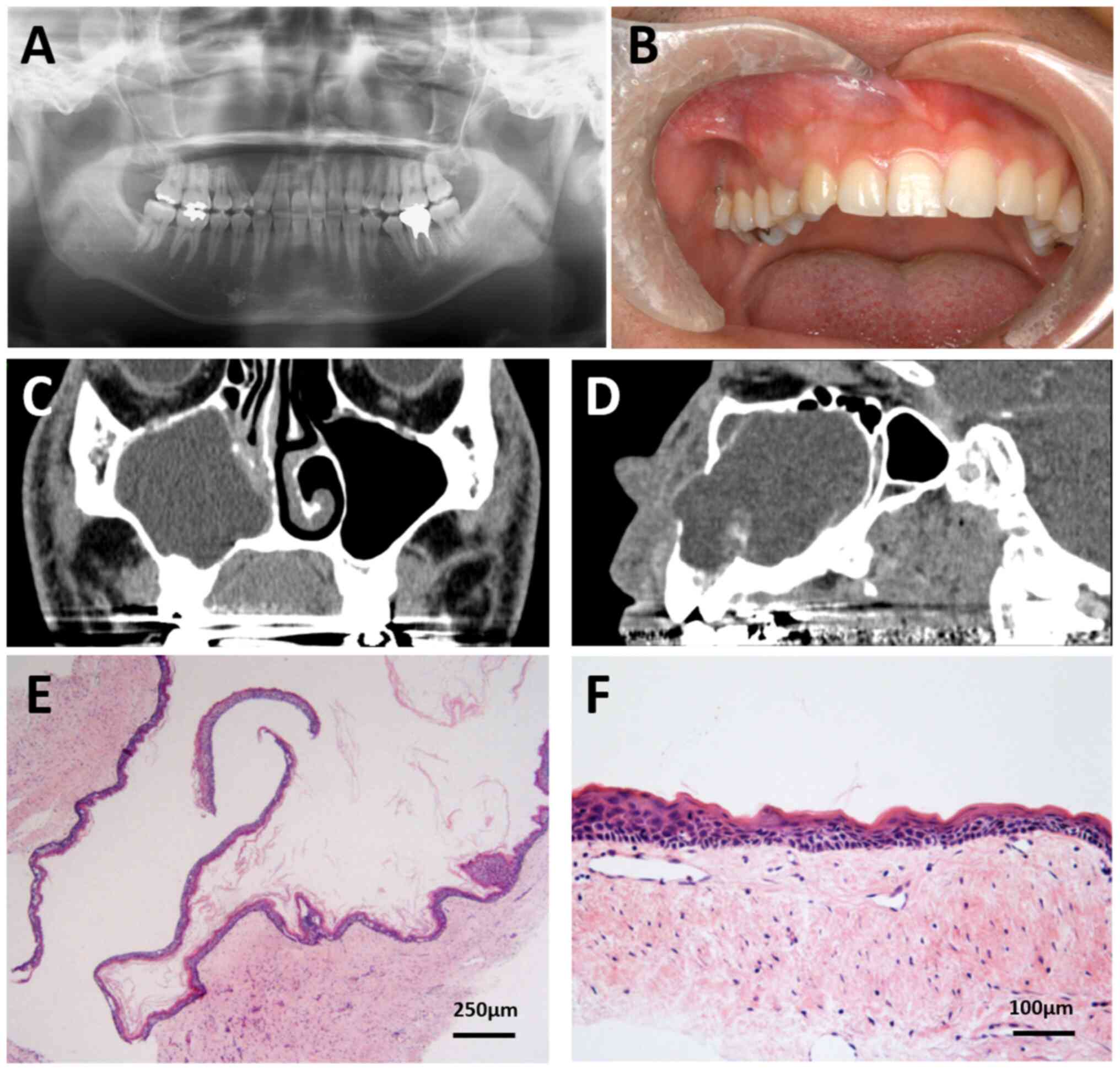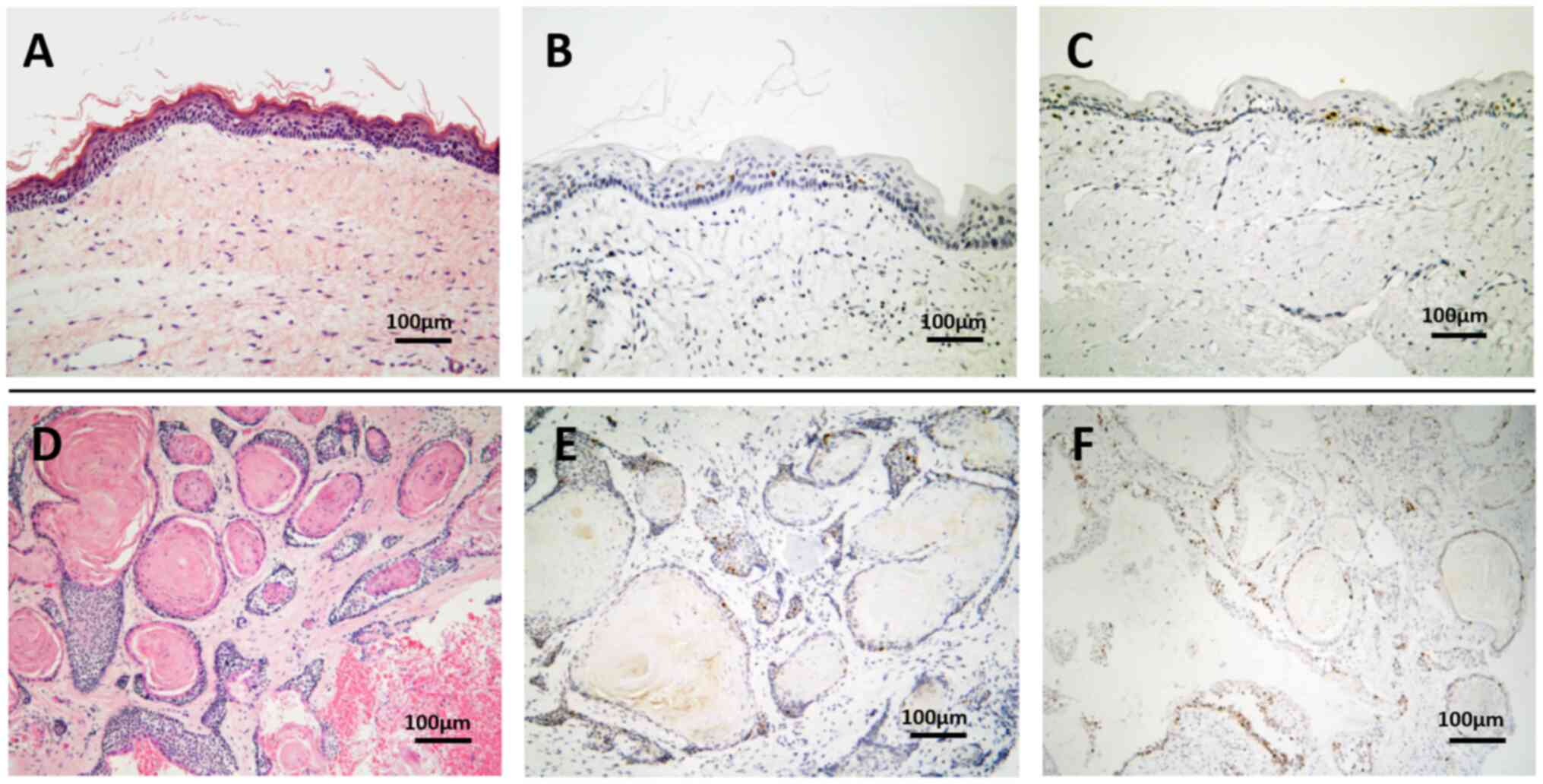|
1
|
Zhang R, Yang J, Zhang J, Hong Y, Xie X
and Li T: Should the solid variant of odontogenic keratocyst and
keratoameloblastoma be classified as the same entity? A
clinicopathological analysis of nine cases and a review of the
literature. Pathology. 53:478–486. 2021. View Article : Google Scholar : PubMed/NCBI
|
|
2
|
Ide F, Mishima K and Saito I: Solid-cystic
tumor variant of odontogenic keratocyst: an aggressive but benign
lesion simulating keratoameloblastoma. Virchows Arch. 442:501–503.
2003. View Article : Google Scholar : PubMed/NCBI
|
|
3
|
Vered M, Buchner A, Dayan D, Shteif M and
Laurian A: Solid variant of odontogenic keratocyst. J Oral Pathol
Med. 33:125–128. 2004. View Article : Google Scholar : PubMed/NCBI
|
|
4
|
Daley TD, Multari J and Darling MR: A case
report of a solid keratocystic odontogenic tumor: Is it the missing
link? Oral Surg Oral Med Oral Pathol Oral Radiol Endod.
103:512–515. 2007. View Article : Google Scholar : PubMed/NCBI
|
|
5
|
Geng N, Lv D, Chen QM, Zhu ZY, Wu RQ, He
ZX and Chen Y: Solid variant of keratocystic odontogenic tumor with
ameloblastomatous transformation: A case report and review of the
literature. Oral Surg Oral Med Oral Pathol Oral Radiol.
114:223–229. 2012. View Article : Google Scholar : PubMed/NCBI
|
|
6
|
Kahraman D, Gunhan O and Celasun B: A
series of 240 odontogenic keratocysts: Should we continue to use
the terminology of ‘keratocystic odontogenic tumor’ for the solid
variant of odontogenic keratocyst? J Craniomaxillofac Surg.
46:942–946. 2018. View Article : Google Scholar : PubMed/NCBI
|
|
7
|
Santana DCP, Xavier FCDA, Santos JND and
Henriques ÁCG: Is the solid variant of odontogenic keratocyst the
neoplastic counterpart of the lesion? Oral Dis. 28:2215–2218. 2022.
View Article : Google Scholar : PubMed/NCBI
|
|
8
|
Whitt JC, Dunlap CL, Sheets JL and
Thompson ML: Keratoameloblastoma: A tumor sui generis or a chimera?
Oral Surg Oral Med Oral Pathol Oral Radiol Endod. 104:368–376.
2007. View Article : Google Scholar : PubMed/NCBI
|
|
9
|
Robinson L, Smit C, Fonseca FP, Abrahão
AC, Romañach MJ, Khurram SA, Hunter KD, Speight PM and van Heerden
WFP: Keratoameloblastoma: A report of seven new cases and review of
literature. Head Neck Pathol. 16:1103–1113. 2022. View Article : Google Scholar : PubMed/NCBI
|
|
10
|
Ide F, Ito Y, Muramatsu T, Saito I and
Abiko Y: Histogenic relations between keratoameloblastoma and solid
variant of odontogenic keratocyst. Oral Surg Oral Med Oral Pathol
Oral Radiol. 114:812–814. 2012. View Article : Google Scholar : PubMed/NCBI
|
|
11
|
Ide F, Ito Y, Nishimura M, Ogawa I and
Kikuchi K: Keratoameloblastomatous transformation of a recurrent
unicystic ameloblastoma: A novel case raising diagnostic and
classification difficulties. Pathology. 54:386–388. 2012.
View Article : Google Scholar
|
|
12
|
Hankey W, Frankel WL and Groden J:
Functions of the APC tumor suppressor protein dependent and
independent of canonical WNT signaling: Implications for
therapeutic targeting. Cancer Metastasis Rev. 37:159–172. 2018.
View Article : Google Scholar : PubMed/NCBI
|
|
13
|
Kennedy SA, Jarboui MA, Srihari S, Raso C,
Bryan K, Dernayka L, Charitou T, Bernal-Llinares M,
Herrera-Montavez C, Krstic A, et al: Extensive rewiring of the EGFR
network in colorectal cancer cells expressing transforming levels
of KRASG13D. Nat Commun. 11:4992020. View Article : Google Scholar : PubMed/NCBI
|
|
14
|
Coura BP, Bernardes VF, de Sousa SF,
França JA, Pereira NB, Pontes HAR, Gomes CC, da Cruz Perez DE,
Albuquerque Junior RLC, de Souza LB, et al: KRAS mutations drive
adenomatoid odontogenic tumor and are independent of
clinicopathological features. Modern Pathol. 32:799–806. 2019.
View Article : Google Scholar : PubMed/NCBI
|
|
15
|
Guimarães LM, Coura BP, Gomez RS and Gomes
CC: The molecular pathology of odontogenic tumors: Expanding the
spectrum of MAPK pathway driven tumors. Front Oral Health.
2:7407882022. View Article : Google Scholar : PubMed/NCBI
|
|
16
|
Chaisuparat R, Yodsanga S, Montaner S and
Jham BC: Activation of the Akt/mTOR pathway in dentigerous cysts,
odontogenic keratocysts, and ameloblastomas. Oral Surg Oral Med
Oral Pathol Oral Radiol. 116:336–342. 2013. View Article : Google Scholar : PubMed/NCBI
|
|
17
|
Stojanov IJ, Ho D, Huss J, Gopalakrishnan
R, Yoest JM and Koutlas IG: An unusual gingival (Peripheral) tumor
with features of keratoameloblastoma with cytologic atypia or
possible malignant transformation exhibiting ARID1A mutation. Head
Neck Pathol. 17:808–814. 2023. View Article : Google Scholar : PubMed/NCBI
|













